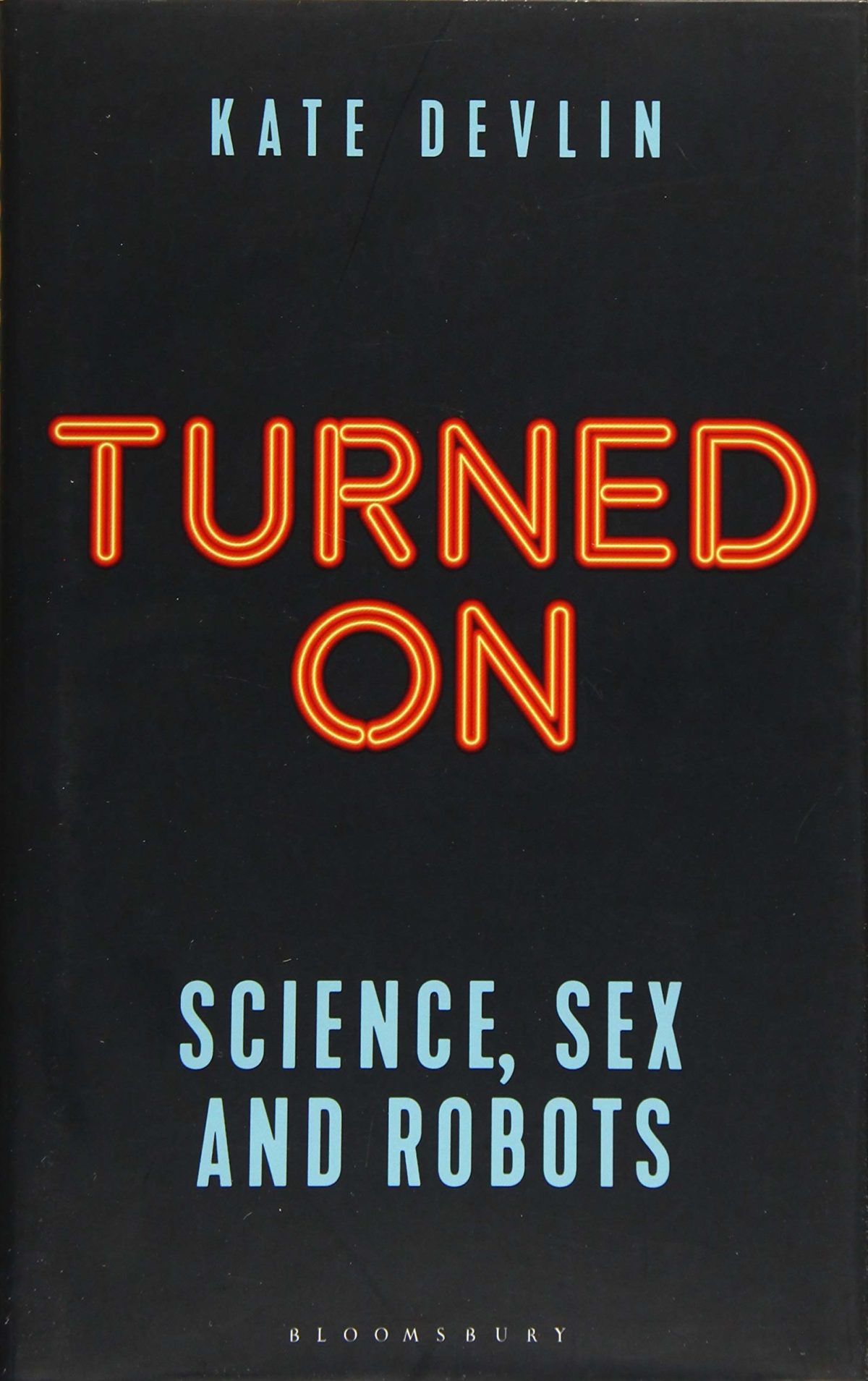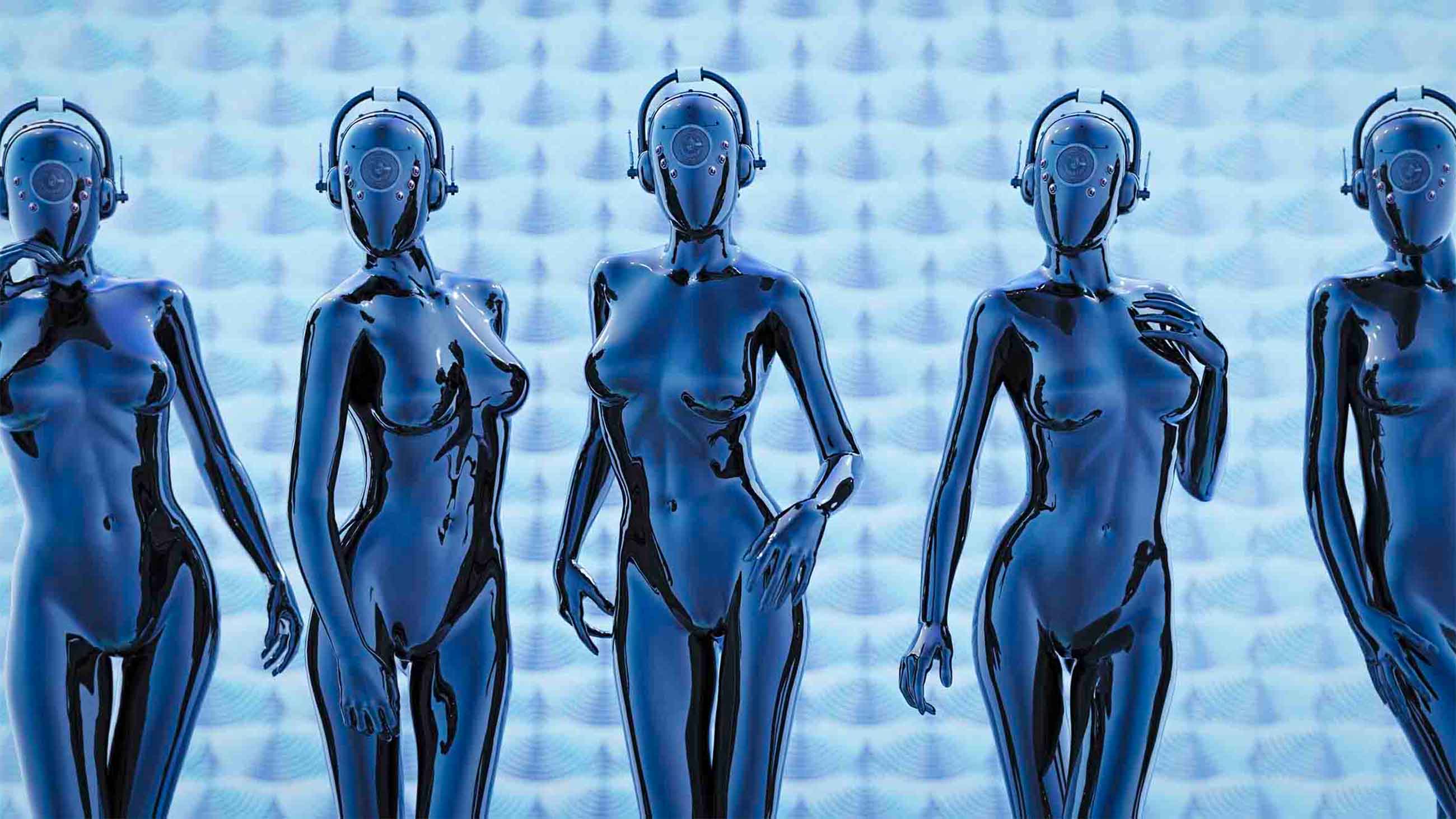When I was a kid reading the stories of Isaac Asimov and watching robots like Robby in the 1956 film “Forbidden Planet” and B-9 (of “Danger, Will Robinson!” fame) in “Lost in Space,” no one was talking about sex robots. Instead, pioneering science fiction writers like Asimov, along with a few visionary scientists, worried about robots malfunctioning, disobeying humans, or running amok on killing sprees. So as I read Kate Devlin’s engaging “Turned On: Science, Sex, and Robots,” I kept wondering: What would Professor Asimov, with his famous Three Laws of Robotics, think about all this?

BOOK REVIEW — “Turned On: Science, Sex and Robots,” by Kate Devlin (Bloomsbury Sigma, 288 pages).
Devlin is a computer scientist and sex researcher at King’s College London who specializes in the various intersections of sexuality and technology, particularly regarding AI systems, sex toys, and yes, sex robots. It’s a field that obviously invites cocktail-party reactions ranging from amusement to embarrassment to indignation, making a well-developed sense of humor a necessary qualification for the job. Fortunately, Devlin has that in abundance. Given his own notoriously ribald sense of humor, Dr. Asimov and Professor Devlin would no doubt have had quite an entertaining discussion, if only Asimov were still with us. Among other things, they could discuss what Devlin seems to think is Asimov’s “unconscious bias” in his robot characters.
The whole notion of sex robots may seem rather trivial, a nudge-nudge-wink-wink subject with little social or technological significance. After all, Devlin observes, “We were promised robot servants in our future but the closest we’ve got to that is a small, disc-shaped unit that beaches itself on the edges of rugs. Now suddenly we’re supposed to be worried about the introduction of sex robots?”
Yet, it turns out that the rapidly developing prospect of sex robots, or “sexbots” for short, is serious business. And it’s not just about sex. Among other things, “It’s about intimacy and technology, computers and psychology” and “love and biology,” Devlin writes. It’s about “loneliness and companionship, law and ethics, privacy and community. Most of all, it’s about being human in a world of machines.”
Although we’ve yet to see the sophisticated bots of science fiction like in HBO’s “Westworld,” there’s no lack of dedicated inventor/entrepreneurs striving to turn technological fantasy into reality — or close to it, depending on one’s definition of reality. Devlin introduces us to sexbots that already exist or are under development, including Harmony, created by a California company called Abyss Creations that has already been selling highly realistic sex dolls known as RealDolls for years. Then there’s Samantha, Roxxxy, and others, all with varying degrees of realism, responsiveness, and functionality.
Some can “converse” on the level of Siri or Alexa; others only recite an array of canned phrases. As Devlin notes, “A semblance of human-like behavior can be enough for us to assume a degree of sentience.” Or maybe not. As roboticists have discovered, it’s quite difficult to accurately mimic human physiognomy and behavior. Almost-but-not-quite-human robots can evoke feelings of creepiness, repulsion, even fear — a phenomenon described by the robotics expert Masahiro Mori as the “uncanny valley.” “A significant factor may be that ‘human-looking but not alive’ is redolent of death,” says Devlin, noting Mori’s example of seeing a corpse.
But as the technology develops apace, so are a host of other issues, including political and social ones (Why such emphasis on feminine bots rather than male? Do sexbots really need a “gender” at all?); philosophical and ethical ones (Is sex with a robot really “sex”? What if the robots are sentient?); and legal ones (Does sex with a robot count as cheating on your human partner?)
Many of these concerns overlap with present controversies regarding AI in general, but in this realm, tied so closely with the most profound manifestations of human intimacy, they feel more personal and controversial. Perhaps as a result, Devlin has a self-admitted tendency at times to slip into somewhat heavy-handed feminist polemics, which can overshadow or obscure possible alternative interpretations to some questions — it’s arguable whether the “Blade Runner” films have “a woman problem,” for example, or whether the prevalence of sexbots with idealized and identifiably feminine aesthetics is solely a result of “male objectification.”
Informed by her background as a computer scientist, Devlin provides excellent nuts-and-bolts technical explanations of the fundamentals of machine learning, neural networks, and language processing that provide the necessary foundation for her explorations of the subject, whose sometimes sensitive nature is eased by her sly sense of humor. Describing how an online news source reported on one of her conference talks with the headline “Sex robots could be used in old people’s homes, says expert,” she also notes, “They have also mis-captioned a photo of a sex robot with my name and credentials,” adding that “I am strangely delighted by this.”
Whether or not one considers the concept of a truly functional sex robot as little more than a blow-up doll or as a viable alternative to a flesh-and-blood human being for those lacking that option, technology is on the verge of presenting us with such choices. “Isolation and loneliness are all too often seen as the fault of technology, Devlin writes. But “that same technology can bring us closer together,” preserving human connections across the globe and “giving people a chance at pleasure and happiness where previously they had none.”
“The future of intimacy,’’ she concludes, “is not a bleak and isolated vision but a network of connected people who want, as humans have always wanted, to be together.”
Some may argue with Devlin’s conclusions, or reject the entire idea of physical and emotional intimacy with artificial human (or human-ish) constructs. But “Turned On” provides a fun, informative and authoritative touchstone to debate and consider such prospects.
Mark Wolverton is a science writer, author, and playwright whose articles have appeared in Undark, Wired, Scientific American, Popular Science, Air & Space Smithsonian, and American Heritage, among other publications. His latest book “Burning the Sky: Operation Argus and the Untold Story of the Cold War Nuclear Tests in Outer Space” was published in November.











Comments are automatically closed one year after article publication. Archived comments are below.
Nothing about a robot can assuage the subconscious’s desire for *human* intimacy. You know it’s not real, so of course it won’t feel real. Nobody is offering an explanation for how the lonely individual can truly tackle their situation
I remembered the same Asimov´s story Daniel has quoted. Asimov explored quite well the reactions of the human partner, but also the concerns of the robotic one, trying to take care of a human partner under the rule of the three laws.
But we must also recall another early exploration to this issue in the relationship between Gladia Delmarre and the robot Jander in the series of Elijah Bailey´s stories. Seems the article writer was a little hurried in commenting Devlin work, when he stated none had explored robots and sexuality before :)
“Many of these concerns overlap with present controversies regarding AI in general, but in this realm, tied so closely with the most profound manifestations of human intimacy, they feel more personal and controversial. Perhaps as a result, Devlin has a self-admitted tendency at times to slip into somewhat heavy-handed feminist polemics, which can overshadow or obscure possible alternative interpretations to some questions…”
Wow, are you really saying that since Devlin is a woman, these topics are too emotional for her to view it from all angles? She’s an academic. She has viewed the alternatives, considered them, and discarded them. This reeks of the “only white men can be objective” fallacy.
To be fair to Wolverton, I read Devlin’s book. It is well researched, and her discussions aren’t mere polemics. She provides balanced views on all of the topics, including background and opposing viewpoints. Excluding feminist academic discourse would falsely portray the discussions occurring around this topic. Feminism isn’t tangential or polemic in this context, it is central.
But I suppose that “Many of these concerns overlap with present controversies regarding” feminism “in general, but in this realm, tied so closely with the most profound manifestations of human intimacy, they feel more personal and controversial. Perhaps as a result,” Wolverton has a tendency to discredit feminist academic discourse as polemics. -_-
See, I had the perfect image for this from the TV show Futurama and “Robosexuals” and Undark doesn’t allow image uploads in comments…
I am turning up my washer machine to extra extra high spin cycles. I want my head the fly off. Can you imagine we reproduce with washer machines and we have all these little washing machines running around that look like me. Just make sure they vibrate.
“Why such emphasis on feminine bots rather than male?”
That’s only if you define robots to exclude all the electrically powered sex toys that women seem to like.
Dr. Asimov dealt with this topic way back in 1951 in his short story “Satisfaction Guaranteed”. The plot revolves around an experimental robot embodied as a very handsome male, who is placed in the home of a U.S. Robotics scientist to see how his wife would react to interacting with such a human-like robot. She’s at first very scared, but her husband assures her that the Three Laws of Robotics make the robot perfectly safe. But she also happens to feel very inadequate as a home maker and as a woman and with her social peers. During the several weeks that the robot is there, it first helps her clean and redecorate the house, then bolsters her self-esteem in various ways, and finally makes a pass at her in view of all of her uppity female “friends”. Those other women are shocked and impressed and envious that such an apparently insignificant woman would be cheating on her husband with such an incredibly handsome lover. The explanation for all this turned out to be that the robot had to obey the First Law and prevent the wife from coming to harm, which in this case was her own sense of inadequacy. But the real problem which the experiment revealed was not that a robot could fall in love with a human, but that a human could fall in love with a robot, as the wife ended up doing without realizing it.
Isaac Asimov was a dirty old man. I am sure he would think, first of all, that humans would embrace it (see his book, *I, Robot*) so to speak, and that there would be a societal need for it. If not innate, then acquired.
——– perhaps eric asimov (NYTimes wine editor ) can shed some light ?
Hi, Mark– nice Article, but you did not delve enough into Asimov. He already has given us his position on this subject, and it seems Ms. Devlin does not know her Asimov, either.
Please read Robots of Dawn. Quite ground breaking work on the issue of sexually active robots including the ethical issues.
As for his having ‘robot bias’, on the contrary. His ideas stand up well considering there was no such thing as even a remotely viable robot when he wrote his books.